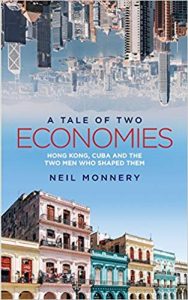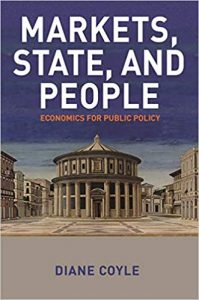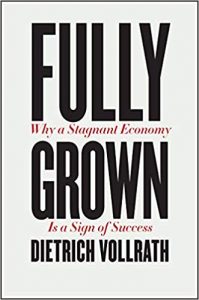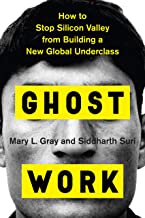I just re-read John McMillan’s Reinventing the Bazaar: A Natural History of Markets, as I keep recommending it to people and thought I’d better check how well it had aged. The answer is pretty well, although if he were to write it now there would surely be more about matching and digital markets. I won’t review it here though, as Laurent Franckx has done so at Goodreads. He concludes:
“I would highly recommend this book to any non-economist with a serious interest in understanding how economists really think about markets, or to economists who are interested in finding more real-world illustrations of the issues they discuss in their academic papers. The book is not very recent (first published in 2003). In the meanwhile, there has been an increased effort from great economists with real scientific credentials (rather than celebrity economists) to write for a general audience. But this book remains rather unique in its scope and balance.”
 Another book that landed here recently and I have skimmed is Neil Monnery’s A Tale of Two Economies: Hong Kong, Cuba and the Two Men Who Shaped Them. Monnery wrote the excellent (2017) Architect of Prosperity about Sir John Cowperthwaite’s shaping of colonial Hong Kong. Who he, you might ask? Indeed, that was part of the interest – an unknown who had laid the foundations for modern Hong Kong’s role as a financial and trading centre. This new book is, intriguingly, a compare and contrast of Cowperthwaite and Che Guevara, or rather an assessment of the natural experiment of two polar opposite economic systems, both intended to deliver the same aim of economic development and lasting prosperity.
Another book that landed here recently and I have skimmed is Neil Monnery’s A Tale of Two Economies: Hong Kong, Cuba and the Two Men Who Shaped Them. Monnery wrote the excellent (2017) Architect of Prosperity about Sir John Cowperthwaite’s shaping of colonial Hong Kong. Who he, you might ask? Indeed, that was part of the interest – an unknown who had laid the foundations for modern Hong Kong’s role as a financial and trading centre. This new book is, intriguingly, a compare and contrast of Cowperthwaite and Che Guevara, or rather an assessment of the natural experiment of two polar opposite economic systems, both intended to deliver the same aim of economic development and lasting prosperity.
 I’ve also read Gertrude Himmelfarb’s On Looking into the Abyss, picked up after the recent news of her death. There were some obits that made me think I should fill this gap in my knowledge. This book is a collection of lectures assessing post-modernism in history (an interesting read alongside the lead letter in the latest issue of the The Point about English literature). It didn’t wow me but I was interested to see how a collection of lectures turned out, as I’m preparing a series of my public lectures over 8 years for a new book next year (to be titled Cogs and Monsters).
I’ve also read Gertrude Himmelfarb’s On Looking into the Abyss, picked up after the recent news of her death. There were some obits that made me think I should fill this gap in my knowledge. This book is a collection of lectures assessing post-modernism in history (an interesting read alongside the lead letter in the latest issue of the The Point about English literature). It didn’t wow me but I was interested to see how a collection of lectures turned out, as I’m preparing a series of my public lectures over 8 years for a new book next year (to be titled Cogs and Monsters).
Meanwhile, there’s always my recent book, Markets, States and People, to read – very kindly reviewed in the FT by Giles Wilkes. 🙂





